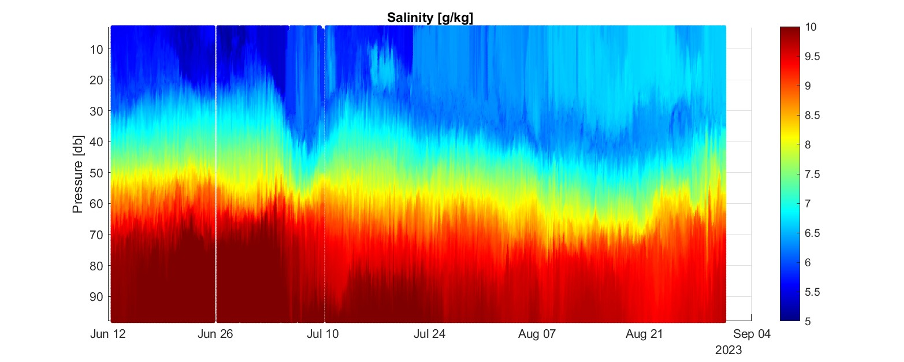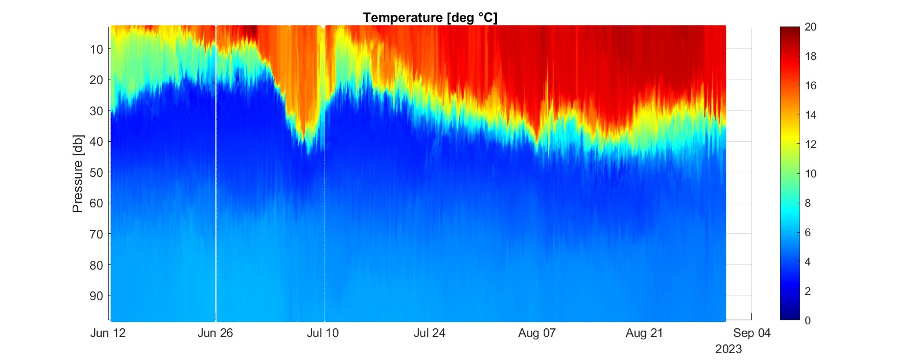TalTech has provided access to the cabled profiling station data, which allows monitoring of water column properties in near real-time in the Gulf of Finland near Keri Island. The profiler performs a profile every 3 hours in the full depth range at 110 m sea depth.
Keri data has been useful to the scientific community, as well as for operational oceanographic purposes and underwater operations. Likewise, Keri data provides necessary high-resolution supporting data for conventional monitoring to assess the status of eutrophication in the variable Gulf of Finland.
As the Gulf of Finland is very variable (compared to the Central Baltic Sea), high-resolution data delivered by Keri station has been valuable in studies addressing water column structure (temperature, salinity, oxygen, etc.).
 Keri data is every day delivered to BOOS (Baltic Sea Operational Oceanographic System), to improve the marine service products by validation and assimilation. Turbidity data has been provided to companies conducting underwater works, e.g. shipwreck investigations.
Keri data is every day delivered to BOOS (Baltic Sea Operational Oceanographic System), to improve the marine service products by validation and assimilation. Turbidity data has been provided to companies conducting underwater works, e.g. shipwreck investigations.
The central location in the gulf the data provided by Keri station allows estimation of benthic oxygen conditions in most of the gulf. Our trial in the frame of JERICO-S3 supersite action demonstrated that the production of daily benthic oxygen maps for the Gulf of Finland is possible and reliable based on Keri data. Benthic oxygen maps obtained solely from the Keri profiler data and based on the research vessel mappings well agreed. The main reason for the good reliability of this simple approach is the nature of the Gulf of Finland. Temporal variability in the deep layers of the gulf is high while in the weekly timescale, the spatial variability in the deep layer is small. It means if the water in the deep layer is hypoxic at the central part of the gulf, it is very likely the same at the entrance of the gulf. Thus, Keri profiler data improves the reliability of indicators in status assessments of eutrophication in HELCOM.
Keri profiling station is the indispensable observing spot between the Northern Baltic Proper and the Eastern Gulf of Finland. The station is an integral and key part of the JERICO-RI in the NE Baltic Sea. Moreover, its offshore, deep location (in the Baltic Sea context) makes it a unique observatory for the region. The reliability of the observatory has improved during the JERICO-S3 project.

The closeness of Keri Island allows the use of the observatory in meteorological observations and air-sea fluxes studies. Observations of carbon dioxide in the water column and atmosphere is planned to start in the coming years. Likewise, permanent current profiling will be started.
